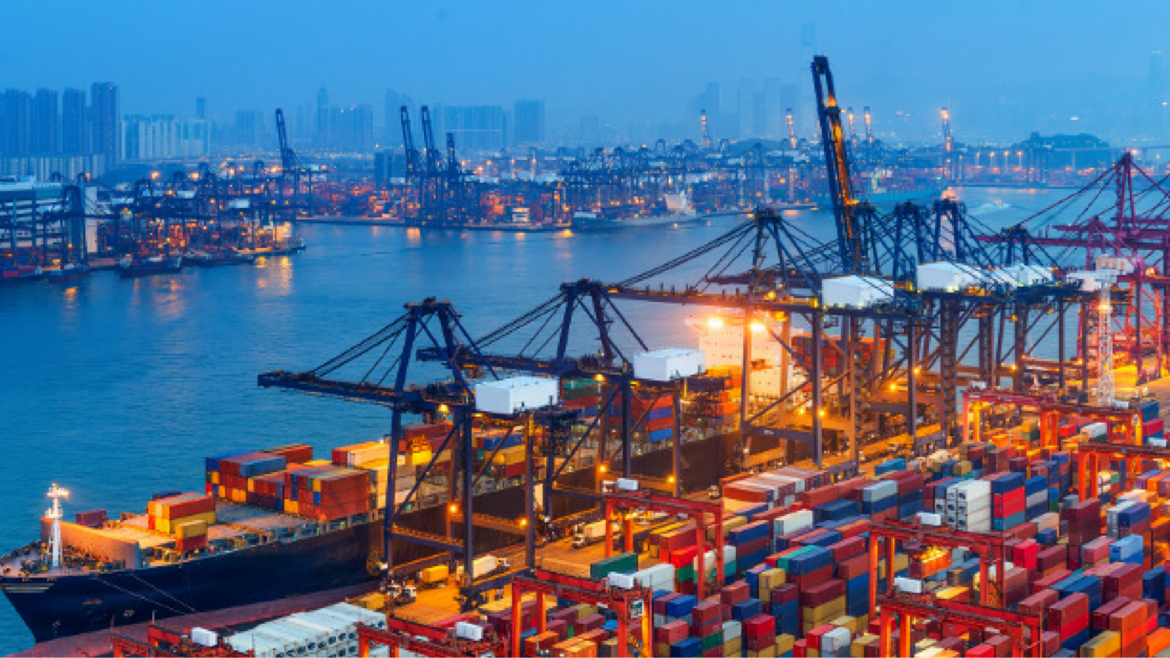In the mid-20th century, containerisation made “the world smaller and world economy bigger” by dramatically decreasing the time, labour and cost required to move goods around the world. The relatively simple act of standardising units of shipment allowed for far greater efficiency and more sophisticated planning in international trade.
Now, the shipping industry is looking to automation, analytics and even artificial intelligence to transform global trade once again. Could this have as big an impact as containerisation?
For a glimpse of the future, look no further than to the port of Rotterdam’s new terminal, Maasvlakte 2, which opened for business in April 2015.
It is the most heavily automated port in the world. A crane, operated from afar via video link, lifts containers from ships onto the land. Beyond that, human labour is scarce: automated guided vehicles (AGVs) scuttle about autonomously, picking up and dropping off cargo. The AGVs are directed by on-board artificial intelligence that navigates using in-built sensors and transponders in the tarmac.
The containers themselves have had an upgrade too. They are larger than they were in the 1950s – about double the size – and are increasingly fitted with RFID tags that let ports and cargo owners keep track of goods as they cross the world. Position detection systems and optical character recognition (OCR) further assist in their tracking and sorting.
These technological upgrades make it possible for a central software analytics platform – a terminal operating system (TOS) – to automate what were once manual processes. Sorting, prioritising and routing – tasks that used to be performed by stevedores wielding clipboards and stickers – are just the kind of complex tasks that computers do much better than humans.
For Maasvlakte 2, the result of its automated upgrade is a 50% increase in operating efficiency, an accompanying reduction in costs and fewer accidents.
This level of automation is not limited to the dockside. Already, distribution centres such as the UPS Worldport in Louisville, Kentucky are using data analytics to calculate the most efficient route for any parcel to take. Measuring everything from the delivery truck’s tire pressure to the number of left turns on a particular route is helping UPS drive down delivery costs. One mile a day off each driver’s route saves the company $50 million a year, it claims.
Now, trucks that drive themselves are looming on the horizon. Daimler’s pioneering autonomous truck, the ‘Highway Pilot’, is set to enter into service perhaps in 10 to 15 years, having already successfully driven itself on the Autobahn.
All of this promises to pull the cost of global delivery even closer to zero. In 2004, economists Edward L Glaeser and Janet E Kohlhase wrote that, so great are the opportunities for efficiency in shipping, “[i]t is better to assume that moving goods is essentially costless than to assume that moving goods is an important component of the production process.”
Few could have predicted the impact that containerisation has had on the world economy and, by extension, the lives of millions of people. Another step change in the efficiency of shipping could unlock new global markets and economic opportunities – but will its impact be as great as the first wave of globalisation?
Will automated shipping have as much of an impact on the global economy as containerisation? Share you views over on the Future Realities LinkedIn group, sponsored by Dassault Systèmes.
Sponsored by:





